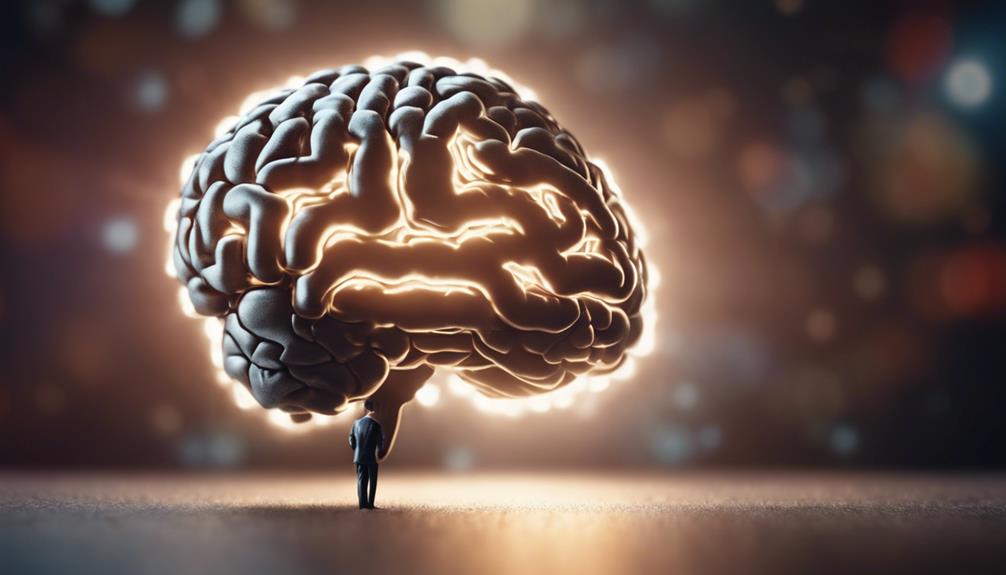Understanding the complex interaction between the brain’s neural circuitry and decision-making processes is crucial for leaders looking to improve their leadership skills. The use of principles from neuroscience provides a distinct perspective for leaders to understand the intricacies of human behaviour and decision-making.
By understanding the neural processes that influence our decisions, leaders can gain valuable insights that are essential for developing more successful leadership approaches.
This examination of the neuroscience of decision-making offers new ways for leaders to tackle decision-making challenges with greater understanding and accuracy.
Key Points
- Neural activities in the prefrontal cortex and amygdala guide leaders in making strategic decisions.
- Emotional intelligence influences decision outcomes by regulating amygdala’s impact.
- Neurotransmitters like dopamine and serotonin drive motivation and mood in decision-making.
- Cognitive diversity enhances leadership decision-making by fostering creativity and high performance.
The Science Behind Decision Making
Engaging in decision-making processes initiates intricate neural activities within the prefrontal cortex and amygdala, essential brain regions responsible for rational thought and emotional regulation. The neural pathways within these regions play a critical role in guiding executive function, enabling individuals to make strategic choices based on a balance of logical analysis and emotional awareness. Understanding the interplay of neural plasticity in the prefrontal cortex and amygdala is fundamental in recognising how cognitive biases can influence decision-making outcomes.
Behavioural economics further underscores the complexity of decision-making, as it explores how individuals may deviate from rational choices due to psychological factors. Neural plasticity within the prefrontal cortex allows for adaptive responses to new information, shaping decision-making processes over time. Cognitive biases, ingrained through experiences and perceptions, can lead individuals astray from most advantageous choices. By comprehending these neural mechanisms and cognitive biases, leaders can enhance their decision-making skills, fostering a more thorough approach towards effective choices in various scenarios.
Brain Regions in Decision Making
The intricate functioning of the prefrontal cortex and amygdala in the brain forms the basis for the neural processes involved in decision-making, highlighting the important roles these brain regions play in guiding individuals towards effective choices.
When examining the dynamics between the prefrontal cortex and amygdala, several key aspects become apparent:
- Neural decision making: The prefrontal cortex and amygdala collaborate to analyse information and emotions, which influences decision-making.
- Executive function: The involvement of the prefrontal cortex in decision-making assists in planning, reasoning, and controlling impulses.
- Emotional regulation: The amygdala’s function in processing emotions affects decision outcomes and their emotional repercussions.
- Cognitive control: Activity in the prefrontal cortex helps regulate cognitive processes that are crucial for decision-making.
- Interplay of brain regions: Understanding how these regions interact improves our understanding of decision-making mechanisms, which is vital for making effective leadership decisions.
Emotional Intelligence and Decisions
Emotional intelligence intricately intertwines with decision-making processes, modulating neural activity in important brain regions such as the prefrontal cortex and amygdala. Emotional regulation plays a key role in managing the amygdala’s influence on decision-making, allowing for more rational and balanced choices. Leaders with high emotional intelligence demonstrate better critical thinking skills, enabling them to navigate complex decisions effectively. By understanding their emotional responses and employing appropriate decision strategies, leaders can enhance their cognitive processing and overall decision-making capabilities. This heightened emotional awareness not only fosters better decision outcomes but also positively impacts leadership effectiveness.
| Emotional Intelligence and Decisions |
|---|
| 1. Emotional Regulation |
| 2. Critical Thinking |
| 3. Decision Strategies |
Incorporating emotional intelligence into decision-making processes is essential for leaders aiming to make sound judgements while considering both logical reasoning and emotional aspects. By leveraging emotional intelligence, leaders can enhance their decision-making skills, ultimately leading to more effective and successful outcomes.
Neurotransmitters and Decision Making
Neurotransmitters play a crucial role in shaping decision-making processes by influencing various cognitive functions and emotional responses in the brain. These chemical messengers impact decision-making through a variety of mechanisms:
- Dopamine: Drives reward motivation, encouraging individuals towards goal achievement.
- Serotonin: Affects mood and cognitive processes, influencing decision-making outcomes.
- Noradrenaline: Regulates attention and arousal levels, impacting focus and decision quality.
- Acetylcholine: Facilitates memory and learning, crucial for evaluating options in decision-making.
- GABA: Acts as an inhibitory neurotransmitter, modulating anxiety levels that can influence risk-taking behaviour during decisions.
Understanding the effects of these neurotransmitters on cognitive processes, attention regulation, memory evaluation, and reward motivation provides valuable insights for leaders seeking to enhance their decision-making skills. By recognising the intricate interplay between these neurotransmitters and decision processes, leaders can make more informed and adaptive choices in various leadership scenarios.
Cognitive Diversity in Leadership
Cognitive diversity in leadership significantly enhances the effectiveness of decision making by incorporating a wide range of perspectives, experiences, and thinking styles within a team or organisation. This diversity in team dynamics promotes an inclusive leadership environment, where individuals with varied backgrounds and expertise contribute to creative problem-solving and innovative decision-making strategies. Research shows that teams with diverse perspectives outperform homogenous groups by challenging assumptions, considering a broader spectrum of possibilities, and reducing the likelihood of groupthink.
Embracing cognitive diversity not only improves decision-making but also nurtures a culture of creativity, adaptability, and high performance within organisations. Effective leaders recognise the importance of diverse perspectives and use them to encourage constructive debate, drive innovation, and achieve sustainable growth. By promoting open communication, embracing different viewpoints, and creating an environment that values diverse thinking styles, leaders can harness the power of cognitive diversity to propel their teams towards success.
Frequently Asked Questions
How does neuroscience relate to leadership?
Neuroscience intersects with leadership through its insights into brain regions like the prefrontal cortex and amygdala that influence decision-making. Understanding neural pathways, emotional intelligence, cognitive biases, and stress responses offers leaders tools to enhance their decision outcomes.
What Neuroscience Has to Say About Decision-Making?
Neuroscience sheds light on decision-making by revealing the influence of cognitive biases, emotional regulation, neuroplasticity effects, dopamine responses, and attentional control.
Understanding these aspects can help individuals make more informed choices by recognising and mitigating biases, managing emotions effectively, leveraging the brain’s adaptability, optimising reward mechanisms, and enhancing focus and concentration.
Integrating these insights can lead to more strategic and successful decision-making processes.
What are the 4 brain structures influencing our decision-making process?
The decision-making process is influenced by several key brain structures.
The prefrontal cortex, responsible for cognitive control and executive functions, plays a vital role in reasoning and problem-solving.
The amygdala, part of the limbic system, processes emotions and can trigger the fight-or-flight response.
The hippocampus, involved in memory and learning, impacts decisions by recalling past experiences.
The striatum, part of the reward system, also contributes to our decision-making abilities.
What is the Neuro Leadership Theory?
Neuroleadership theory explores the complex relationship between neuroscience and leadership. It focuses on the comprehension of cognitive control, emotional regulation, executive functions, neural pathways, and behavioural responses.
Final Thoughts
The complex interaction of brain regions, emotional intelligence, neurotransmitters, and cognitive diversity significantly influences the decision-making processes of leaders.
By adopting the principles of neuroscience, leaders can unlock a myriad of possibilities, allowing them to make exceptional decisions that go beyond traditional boundaries.
The combination of science and leadership creates new opportunities for navigating the intricacies of decision-making, empowering leaders to plot a path towards unrivalled success in the ever-changing world of leadership.




